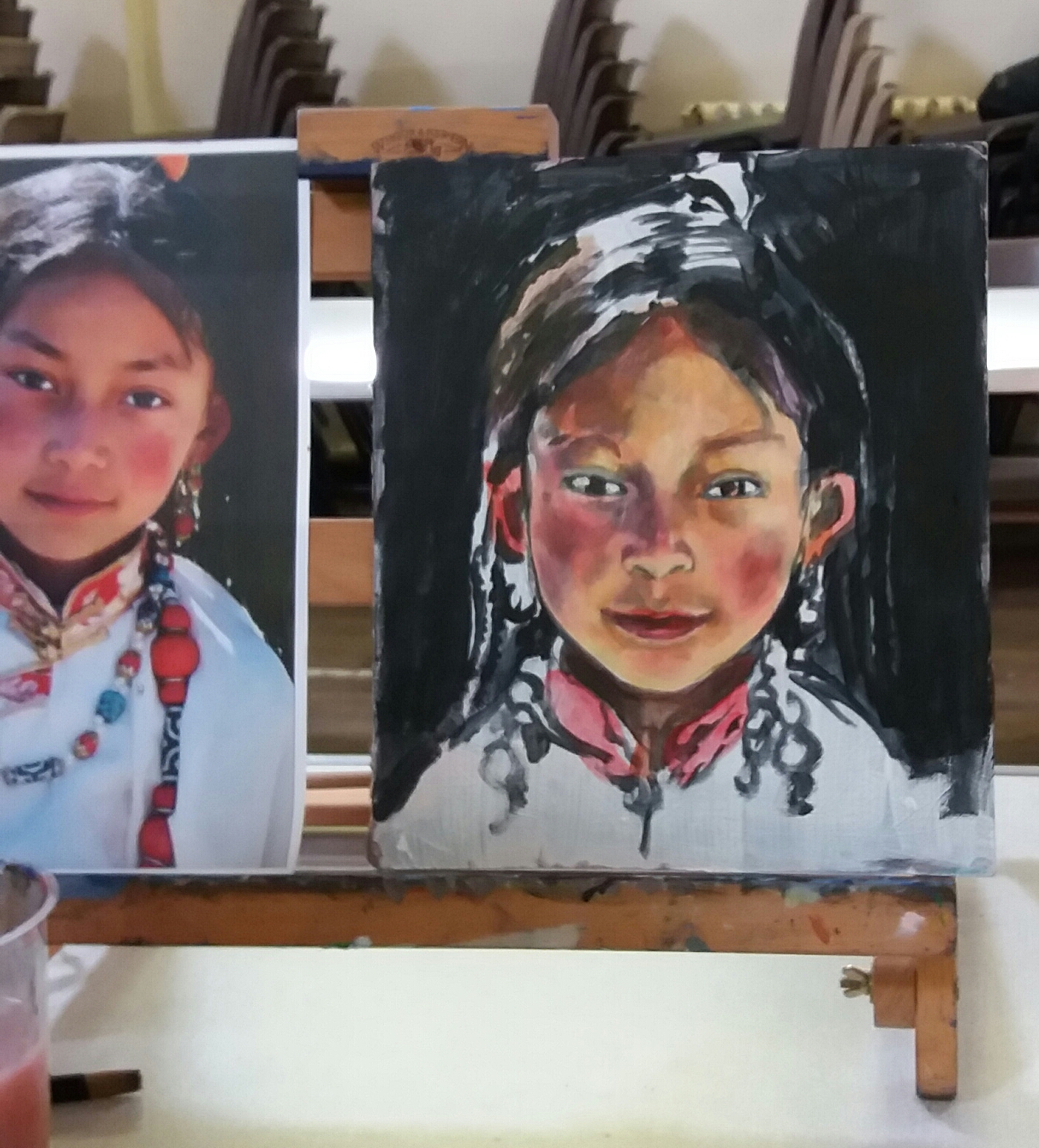The use of glazes over a black and white portrait painting gives a different glowing result. Caroline had a photograph of a young person and had painted it in black, white and greys to start with. She pointed out that it is vital to get tonal values set first.
Working from light to dark, and using either a glaze medium or cheap paints, apply a wash, which allows the dark image to show through. The use of cheaper acrylic paints is suggested because they have less pigment in them therefore a glaze effect is much easier.
Using a filbert brush, mix a light flesh tone and add it to the pale area of the face, adding more pigment layer by layer. The filbert brush doesn’t give hard edges. This is the result needed with this type of portrait painting.
Add pink to the image, bringing in the warmth. At this stage you can go back and forth between the dark and light areas. Working wet in wet blends better, which means you can mix colours on the page if you want to.
Use solid paint for definition, and block in with white if you make a mistake, then start again as it is very easy to go dark in portraits.
Palate: Cadmium Red, Yellow Ochre, Cobalt Blue, Burnt Sienna, Hookers Green, Cadmium Red medium.
It was agreed that this was a really helpful session for those of us that aspire to portrait painting, as this technique allows a very gradual build of a work instead of the dramatic and sometimes disappointing results of using solid paint from the outset. The use of glazes results in a real glow in the work which can’t be achieved with the use of direct non layered painting.





